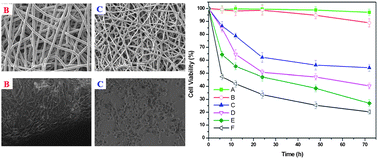Preparation of curcumin loaded poly(ε-caprolactone)-poly(ethylene glycol)-poly(ε-caprolactone) nanofibers and their in vitro antitumor activity against Glioma 9L cells
Abstract
The purpose of this work was to develop implantable curcumin-loaded poly(ε-caprolactone)-poly(ethylene glycol)-poly(ε-caprolactone) (PCL-PEG-PCL, PCEC) nanofibers, which might have potential application in cancer therapy.


 Please wait while we load your content...
Please wait while we load your content...